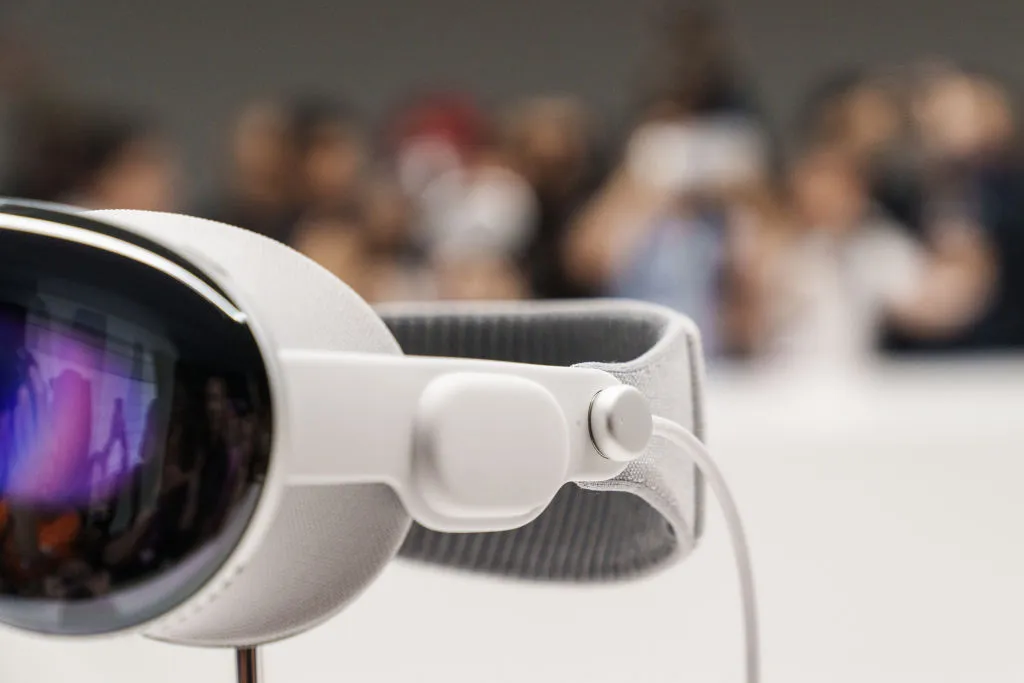Apple isn’t exactly known for being the pioneer of new technology recently. Whether it's folding smartphones, elaborate sound technology or hidden cameras, Apple is rarely first out of the gate.
Instead, it waits. A few years go by, technology advances and once its competitors have released a few versions of something, Apple swoops in with their first iteration. Refined, powerful, stylish and always extremely expensive.
Years on from the initial boom of virtual reality, Apple has finally played its card, announcing its first VR headset. It might be late to the party, but Apple has made its usual move, with its first-ever step into virtual reality being the best model we’ve seen yet.
So, what is so good about Apple’s first venture into the world of the virtual? We spoke to David Reid, professor of AI and spatial computing at Liverpool Hope University to find out.
Blending realities

Unlike some previous attempts at a usable virtual reality headset, Apple’s Vision Po device utilises a mixed reality format. This means that, instead of blacking out the world around you, the headset mixes the virtual with the real world.
Put the headset on and you could interact with a virtual floating monitor above your desk, play games in your living room or essentially make the real world a little bit more fun.
“The big selling point here is that Apple is trying to expand what we mean by the metaverse. Where Meta is based in virtual reality, Apple is looking at augmented reality, putting these virtual elements into the world around you.”, says Reid.
“There is a theory known as spatial computing. It’s the idea that a machine can retain and manipulate referents to real objects in the world. That’s what Apple is doing here and doing so believably.”
This doesn’t mean that the headset is incapable of utilising virtual reality. With a toggle of a switch on the side of the headset, users can alter how much of the world around them is blocked out.
Able to access both virtual and mixed realities, Apple is looking to offer the best of both worlds. While they aren’t the first to do this, they are the first to do it with this much processing power.
Power on top of power
Where Apple really stands out from the crowd is inside the headset. Apple uses two separate chipsets with the Vision Pro, one for processing graphics, vision algorithms and running the software, and a second fully focused on processing input from the cameras, sensors, and microphones.
This dual setup allows images to be displayed lag-free in 12 milliseconds. In theory, this results in a far smoother virtual reality experience, free of jolty movements taking you out of the experience.
“Essentially, this is more powerful than a Macbook Pro. It’s basically a computer strapped to your face. I’m sure this will mean lots of new applications, and new ways to not just play games, but to work, socialise and even just for browsing the internet,” says Reid.

“You’ll be able to do things as creatives and professionals that you can’t do on conventual computers. Because of the price, it will only be early adopters at first, but as it gets cheaper and more readily available, Apple will be leading the way for VR.
Along with the powerful processors, Apple has introduced a number of other unique features. Controllers are gone and instead, Apple utilises powerful eye trackers that can precisely determine what you are looking at.
There are 12 cameras and five sensors in the device. These monitor hand gestures and map the external environment. Two of these cameras transmit roughly a billion pixels per second to the display, depicting the real world around the user.
As an additional level of immersion, Apple has input speakers on either side of the headset. These speakers feature dual-driver audio pods positioned directly next to the ears. They analyse a room’s acoustic properties, adapting the sound to match the space.
“The thing has over a dozen cameras and a complicated tracking system. That requires a huge amount of processing power, but Apple has managed to implement that. That would be impressive enough but Apple then added in a whole host of other high-end features on top,” says Reid.
The motion sickness problem
Throughout all versions of virtual reality, there is one major problem that has plagued the design – motion sickness. Unsurprisingly, two tiny screens inches from your eyes showing rapidly moving footage has the tendency to make people feel a bit sick.
So, has Apple sorted this…? Kind of. “It is better, but it still isn’t ideal. The main problem with VR motion sickness is Vergence-accommodation conflict (VAC).”
VAC is, in essence, an issue that we experience when the brain receives mismatching cues between the distance of a virtual 3D object and the focusing distance required for the eyes to focus on that object.
This frequently occurs with virtual reality due to the nearness of the display. Currently, there is no fix for this with virtual reality, but a number of companies (including Apple) are working on technology that could fix this.
“With Apple, they’ve tried to reduce the motion sickness as much as possible. By reducing lag and delay, and utilising high-quality displays, Apple has made a headset that is still best in class for motion sickness,” says Reid.
Motion sickness is still going to occur, and for some, that is always going to be a problem with virtual reality. However, Apple seems ahead of the game at minimalising the problem as much as possible.
About our expert, David Reid
David Reid is a professor of AI and spatial computing at Liverpool Hope University. He specialises in virtual realities and the growing world of the metaverse.
Read more:
